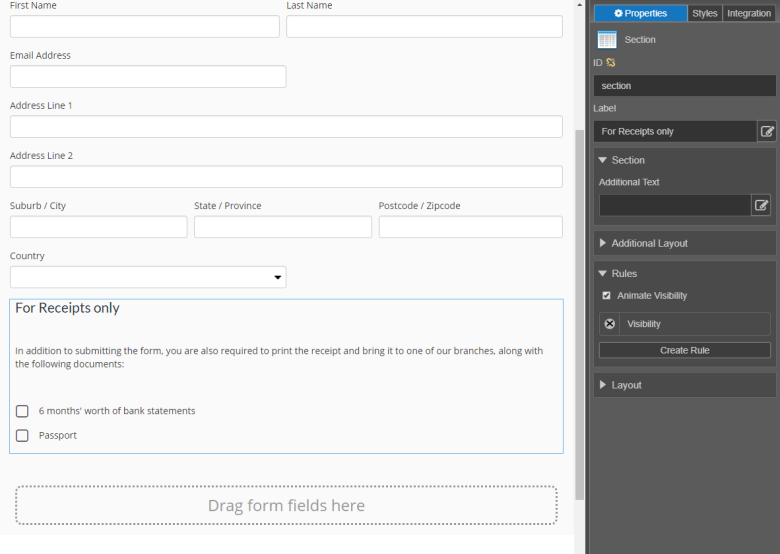Show on Receipt Rule
MaestroThe UI design product. | Form Builder | All versions This feature is related to all versions.
Maestro allows you to show a component on a receipt if a condition is true. The show on receipt visibility rule shows the component on a generated receipt. The component is still displayed in the Editor window, however, when you preview or build the Journey Manager form version, the component is not displayed.
When a transaction is completed by a form user, a receipt is rendered and emailed to the user. This receipt is used as a record for form users. By default, most components are display on both the form, and on the generated receipt. Use the Hide or Show on Receipt rules to hide components on the form and only show them on a receipt, or hide the components on the receipt and only show them on the form.
The show on receipt rule should be used when you have components that require no user input but provide further information to the user. For example, you may want to display a list of items that the user is required be collect in addition to submitting the form and printing a receipt.
To create a Show on Receipt rule:
- Inside the Maestro Editor, select a component from the View pane.
- In the Properties pane, click the Create Rule button.
- Click the Show on Receipt link, located under the Visibility heading.
-
Define the JavaScript-based logic of the rule within the code editor.
As a Visibility rule, the Show on Receipt rule should return
trueto show the component orfalseto hide the component. - Click Save.
The rule will appear in the Properties pane, under the Rules heading.
You can only attach one rule of each type to a component.
This example uses the Section component For Receipts only, which is configured to show only on a generated receipt and is hidden on the rendered form.

The Section component in the above screenshot has been configured with a Show on Receipt Visibility rule.
The screenshot below displays the script that is applied to the section component.

When the form is saved, built and rendered. The form will NOT show the Section component named For receipts only. The screenshot below displays the built and rendered form.

Visibility Rules
There are 4 types of visibility rules:
Next, learn how to create a hide on receipt rule.